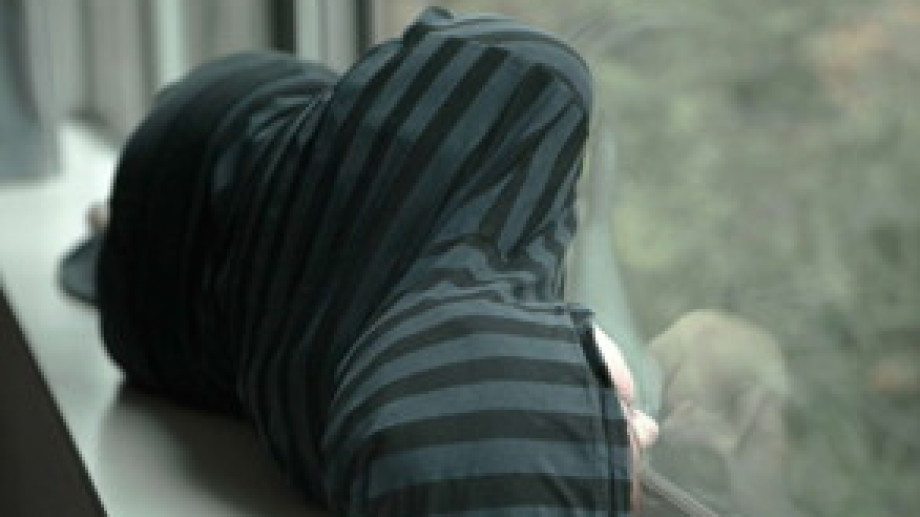
Joanna Hogg's Exhibition
James Berclaz-Lewis is a member of the second annual Critics Academy at the Locarno Film Festival. You can follow him on Twitter at @swissbearclaw.
Piercing the otherwise oppressive silence, two angry voices violently collide in off-screen screams. A perfectly static wide shot hermetically seals a group of upper middle-class vacationers as their awkward emotional response etches itself on their sunken faces. In that memorable, cathartic scene in 2007’s Unrelated, British filmmaker Joanna Hogg demonstrated the critical distance she so firmly enforces from the title screen to the end credits, denying the camera mobility and avoiding close-ups in a manner not dissimilar to the work of counter-cinema legend Michael Haneke, Locarno jury member Yorgos Lanthimos, and the filmmakers of the Romanian New Wave.
In what, until now, looked to be a staple of her filmmaking, Hogg denied the audience’s eager desire to indulge and revel in the cathartic release of her otherwise immaculately polite, bourgeois characters. She would go on to recycle the technique three years later in the equally powerful climax of Archipelago. Much like the work of Haneke, Hogg ignores the opportunity to emotionally manipulate and instead perpetually forces the audience to engage intellectually, assessing and reassessing the events unfolding on the screen.
Both Unrelated and Archipelago concerned a group of wealthy Brits on vacation, their unhurried narratives focused on the gradual emergence of personal anxieties and rising tension as the characters slowly claw away at the thin veil of civility, revealing it for the illusion it is. On both occasions, the explosive yelling jousts played like natural extensions of the slow-burning build-up of polite conflicts between characters, a suiting turning point to the films’ linearity.
With Hogg's new film Exhibition, which premiered at the Locarno Film Festival earlier this month, there are, in fact, no unspoken issues to build-up to. Instead, Hogg throws the audience head-first into the emotional and cerebral chaos of upper-class artist couple D (woman) & H (man). Whereas the protagonists of her two previous films deceptively hid their hawkish inadequacies behind an impenetrable refinement, performance artist D struggles to express her evidently wide-ranging palette of fears and desires to her husband through words, resorting instead to the cryptic realm of her art.

Joanna Hogg's Exhibition
As the couple tries to deal with the selling of their beautiful modernist house (impeccably framed, in all its glorious geometry, by Ed Rutherford’s relentlessly unwavering camera), their conflicts end up timidly translated through their erratic behaviour, sporadic passive-aggressiveness, and persistent breakdowns in communication. Notably, the couple makes recurrent use of an in-house telephone line. However, instead of engaging in natural conversation, they awkwardly blurt out undigested thoughts before abruptly putting an end to the call before anyone has a chance to internalize these sudden confessions.
Without the clear linear crescendo of Hogg’s previous films, a climactic screaming match of the kind seen in Unrelated and Archipelago could not be in the cards. Indeed, Exhibition’s fragmented aesthetic required a redesign of that moment of cathartic release. With that in mind, the British director combines D’s affinity with performance art with what appears to be something approximating a dream sequence. D & H sit next to each other against a white backdrop, illuminated by a bright, off-screen spotlight. These visual cues suggest an interview in front of an unseen and unheard audience.
What first appears to be a conventional situation, with H expressing his appreciation of D’s artistic output (much like a moderator or journalist), suddenly veers into intensely personal territory, with both characters politely but dryly exposing the truths they consistently fail to communicate in real life. While superficially unsatisfying, the unusual scene is an astounding example of Hogg’s attention to the unity of her work with regard to form, and consequently of her ability to evolve and adapt her writing and directing to fit the needs of how she addresses her subject matter.
It is encouraging to see the modernist passion for the cinematic potency of form find a fresh voice in Joanna Hogg, as she continues to explore her narrow pool of themes with an expanding spectrum of exciting ideas. Attentive, perfectionist, and compelling, Hogg is spearheading a welcome wave of cerebral British arthouse films that command the intellectual engagement of discerning audiences. Let’s hope she continues to fiercely go against the grain and follow the more challenging and sinuous road of intelligent cinema, leaving the fast track of emotional coercion to the cinematically insecure.



